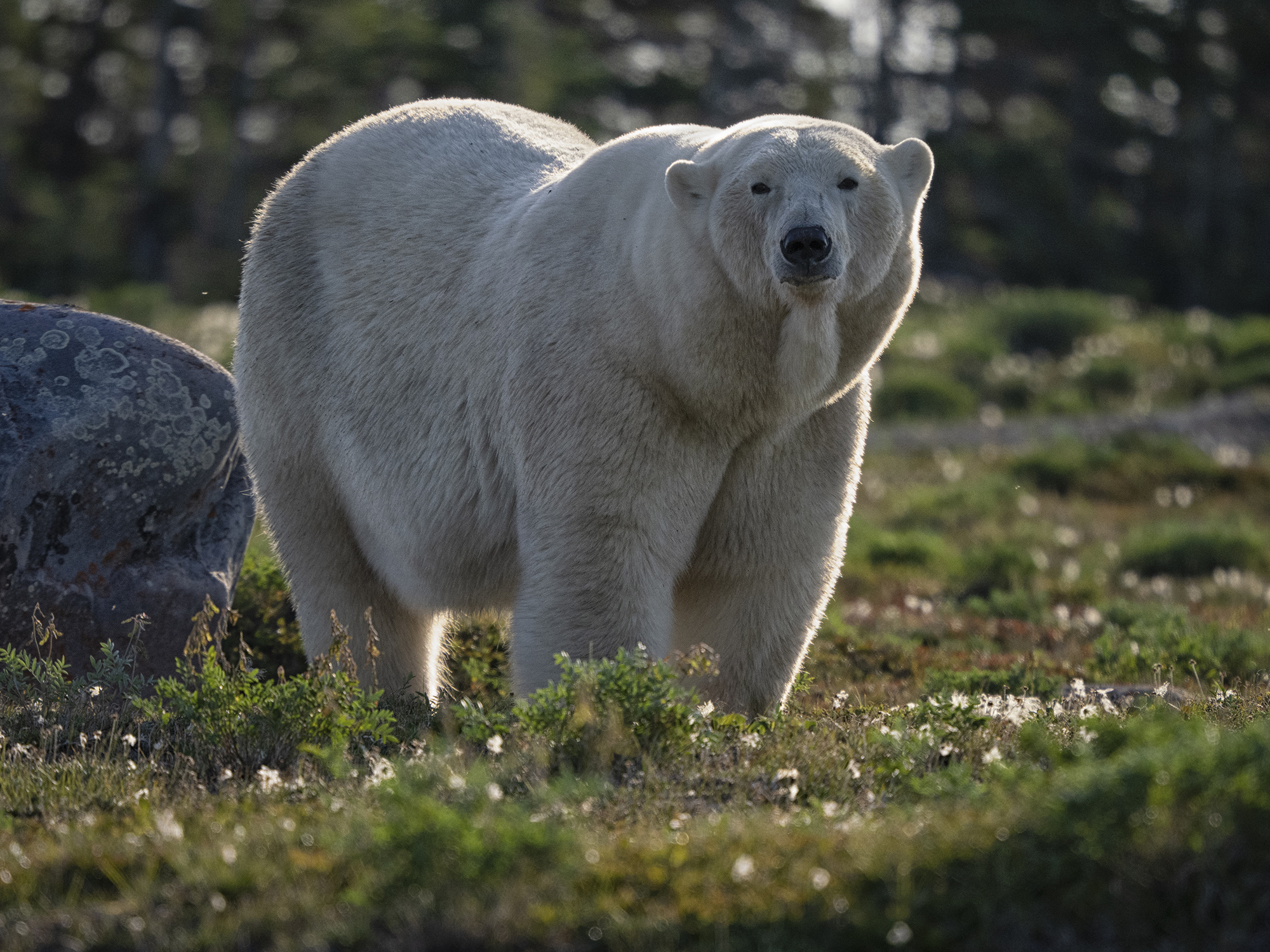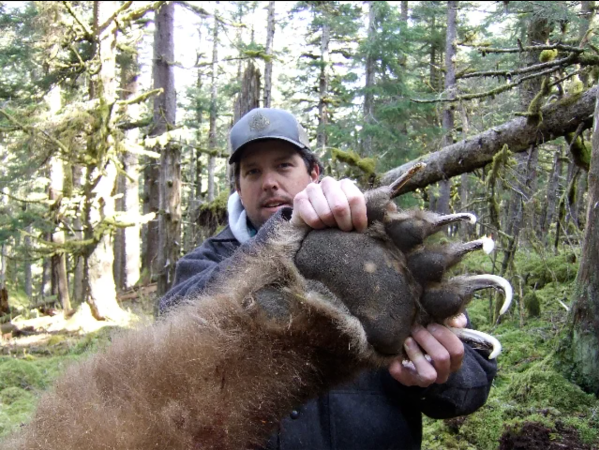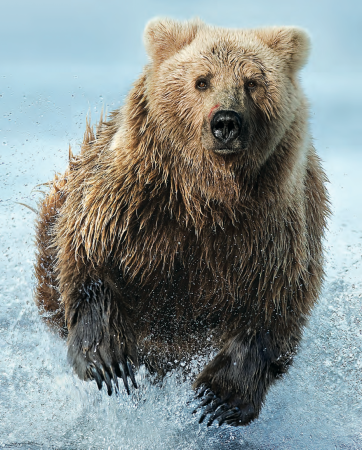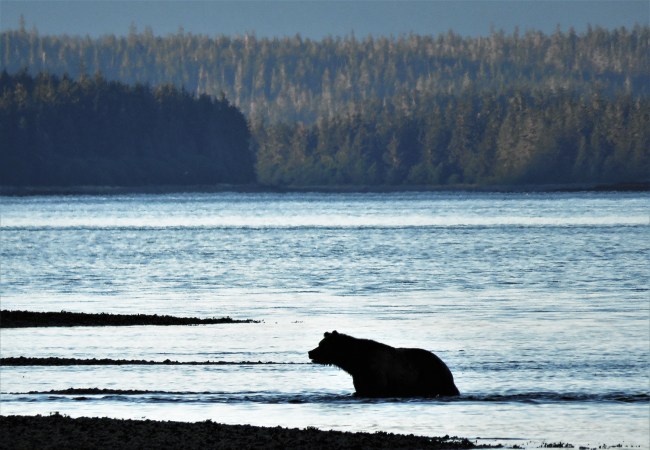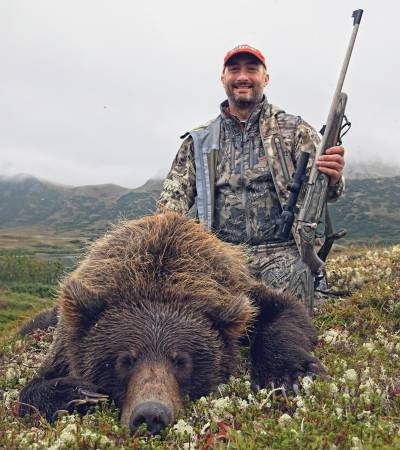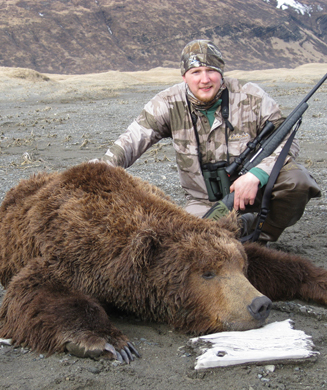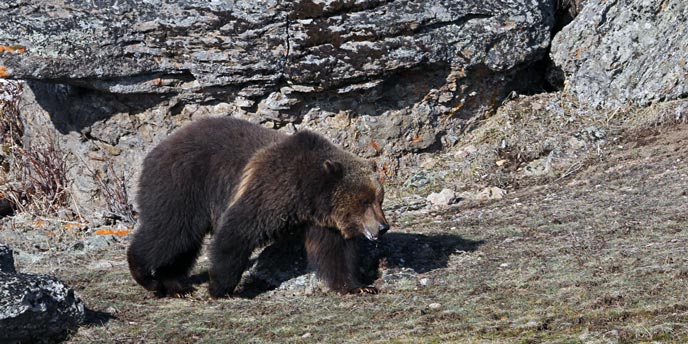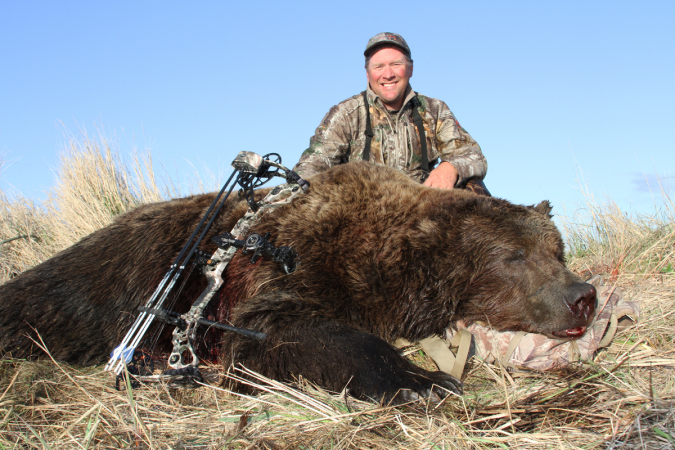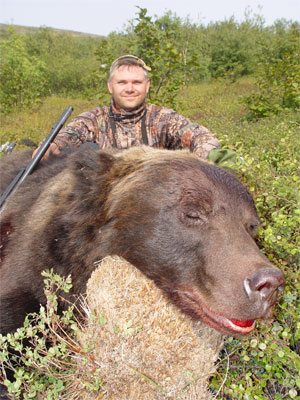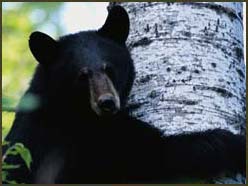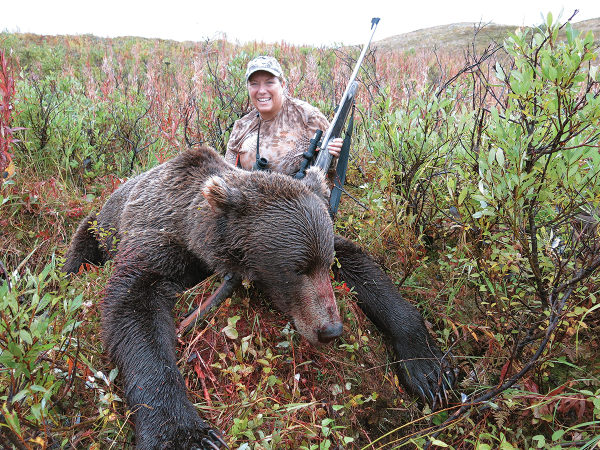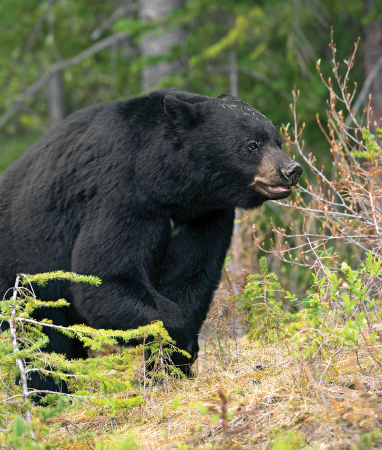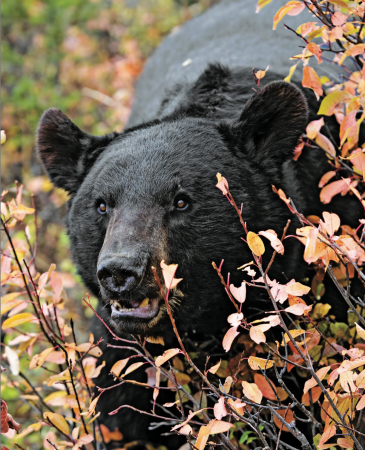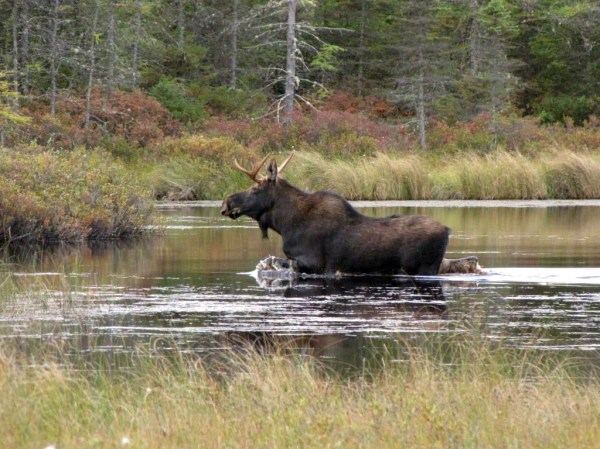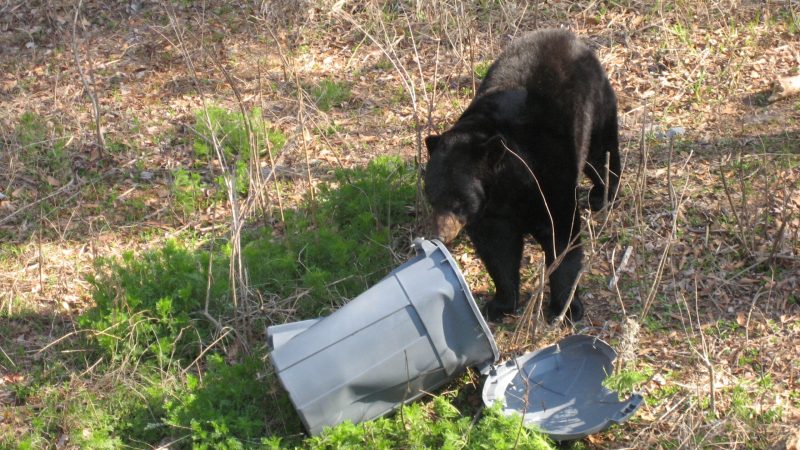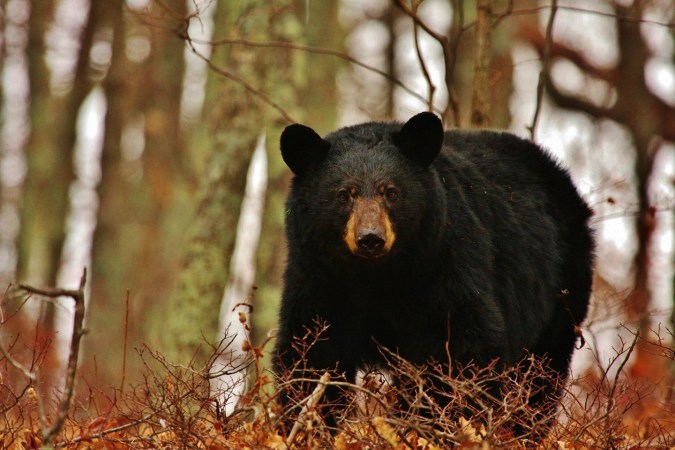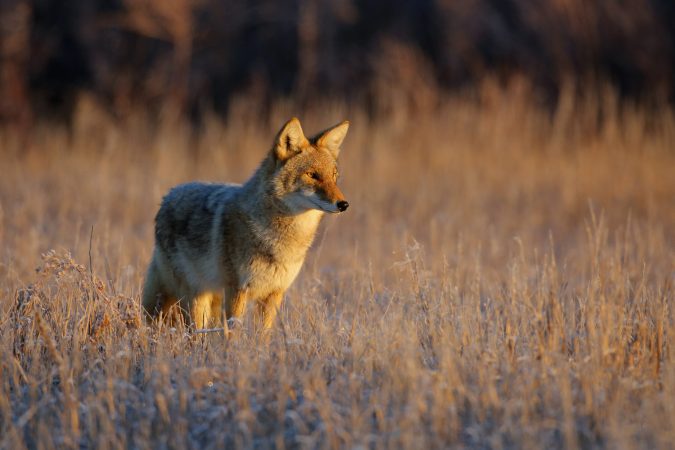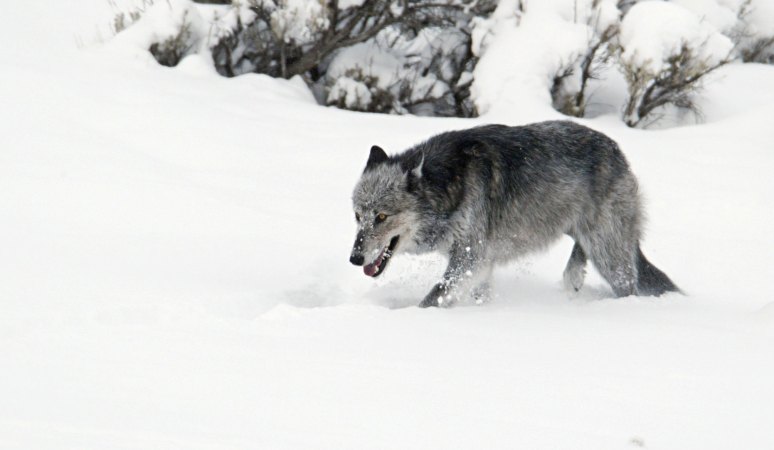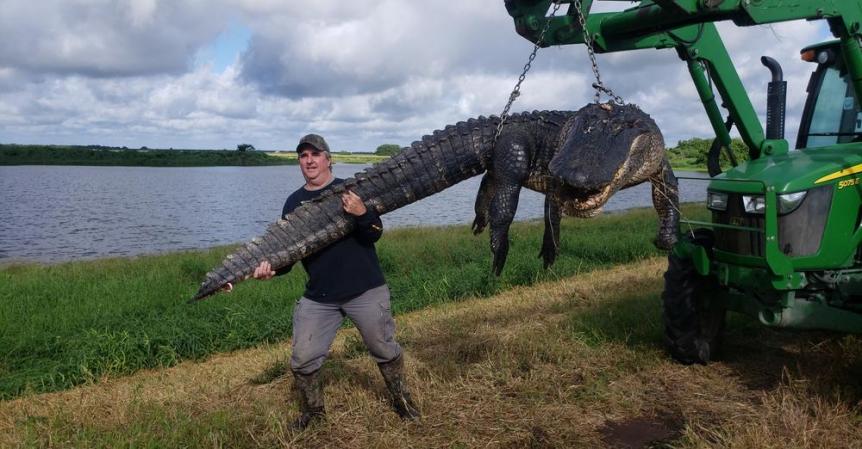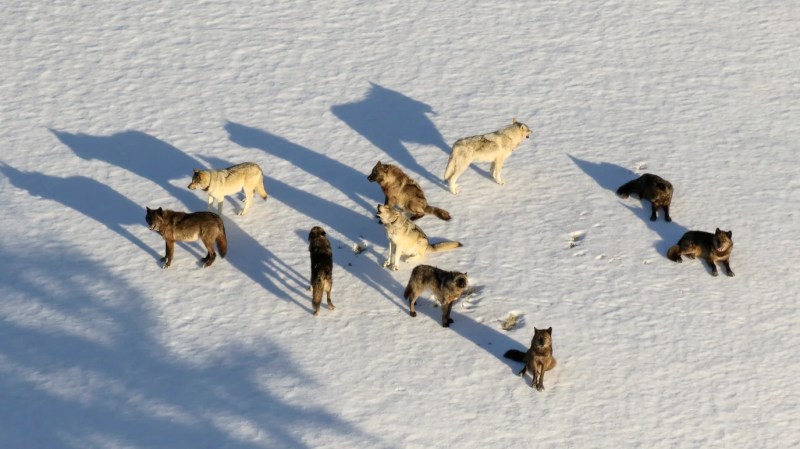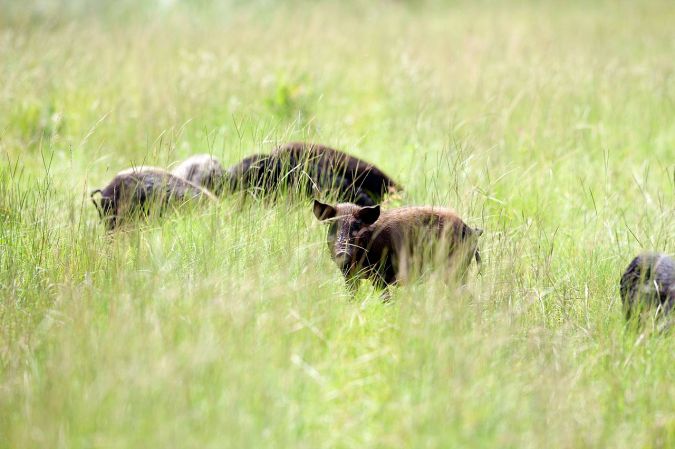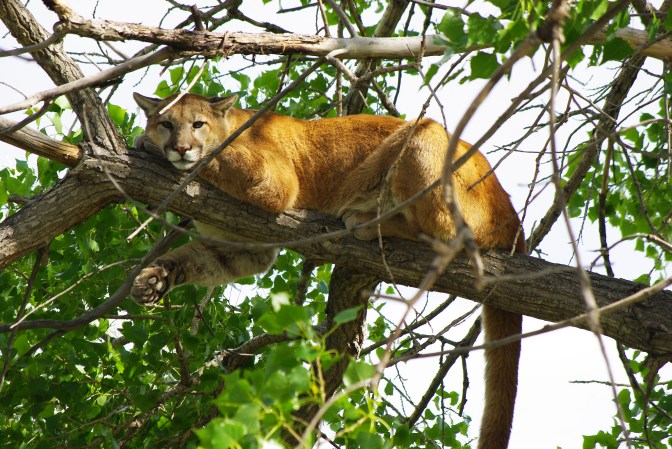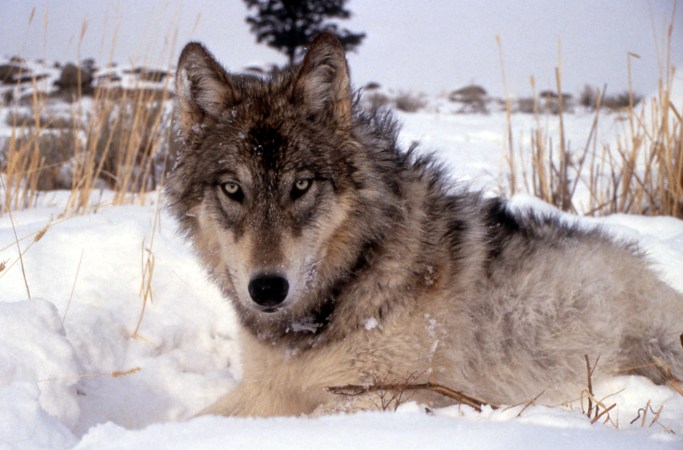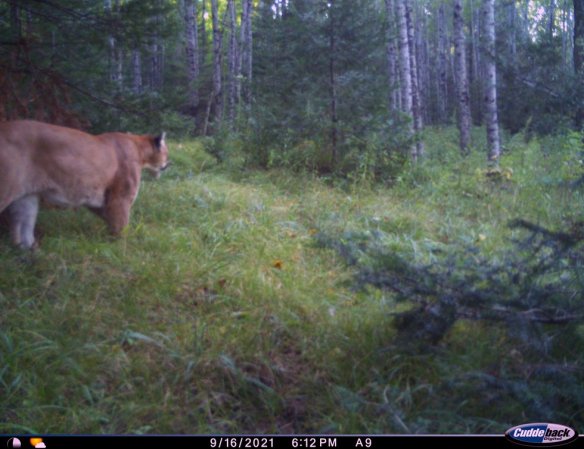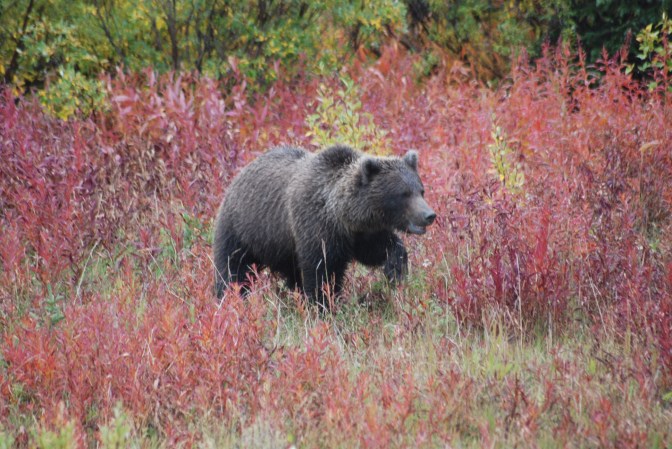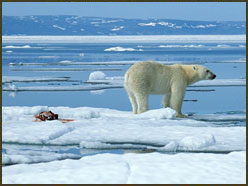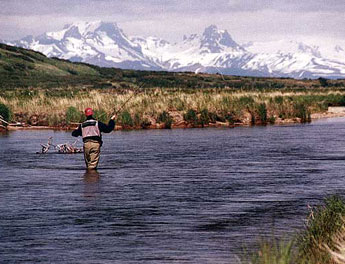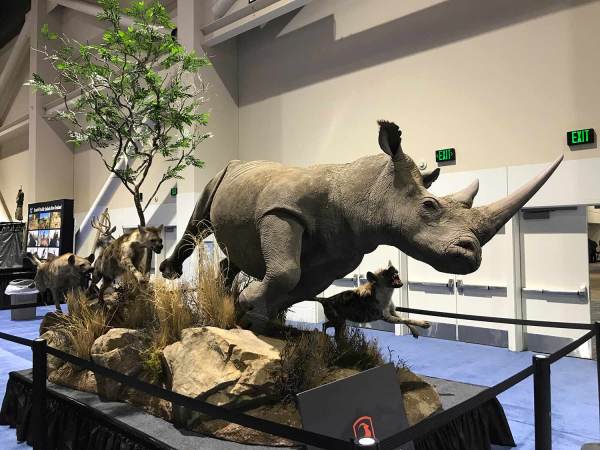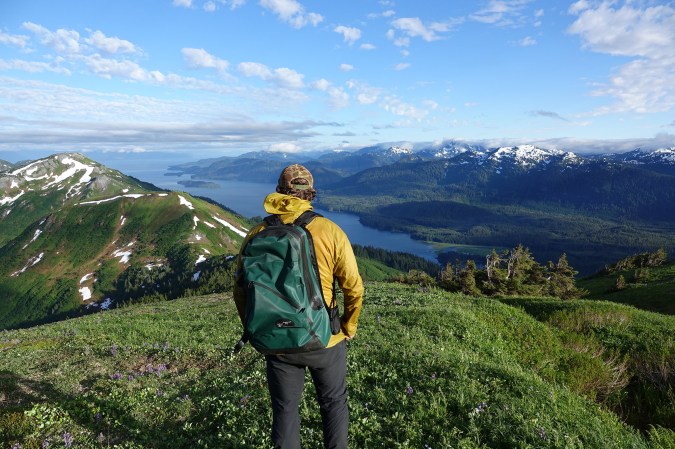In June of 2019 Peter Flynn was on a 19-day trek across the Arctic National Wildlife Refuge (ANWR) when, 400 yards away, he and his companions saw a bear pouncing like a fox on ground squirrels. At first Peter thought it was a grizzly. When he examined it with binoculars, he wasn’t so sure. One of his companions took a picture of the bear with her iPhone. The distant photo shows what looks like a light-colored grizzly with an abnormally long neck. Peter and his companions wonder if the bear was a hybrid, the result of a polar bear and grizzly interbreeding.
“Its coloration was pissy-mountain-goat-butt-white with some brown in the mix. It had a really big rump and a long neck and hydrodynamic shape. We didn’t want to mess with it, so we kept our distance. Now, I sure wish we would have gotten closer,” Peter said.
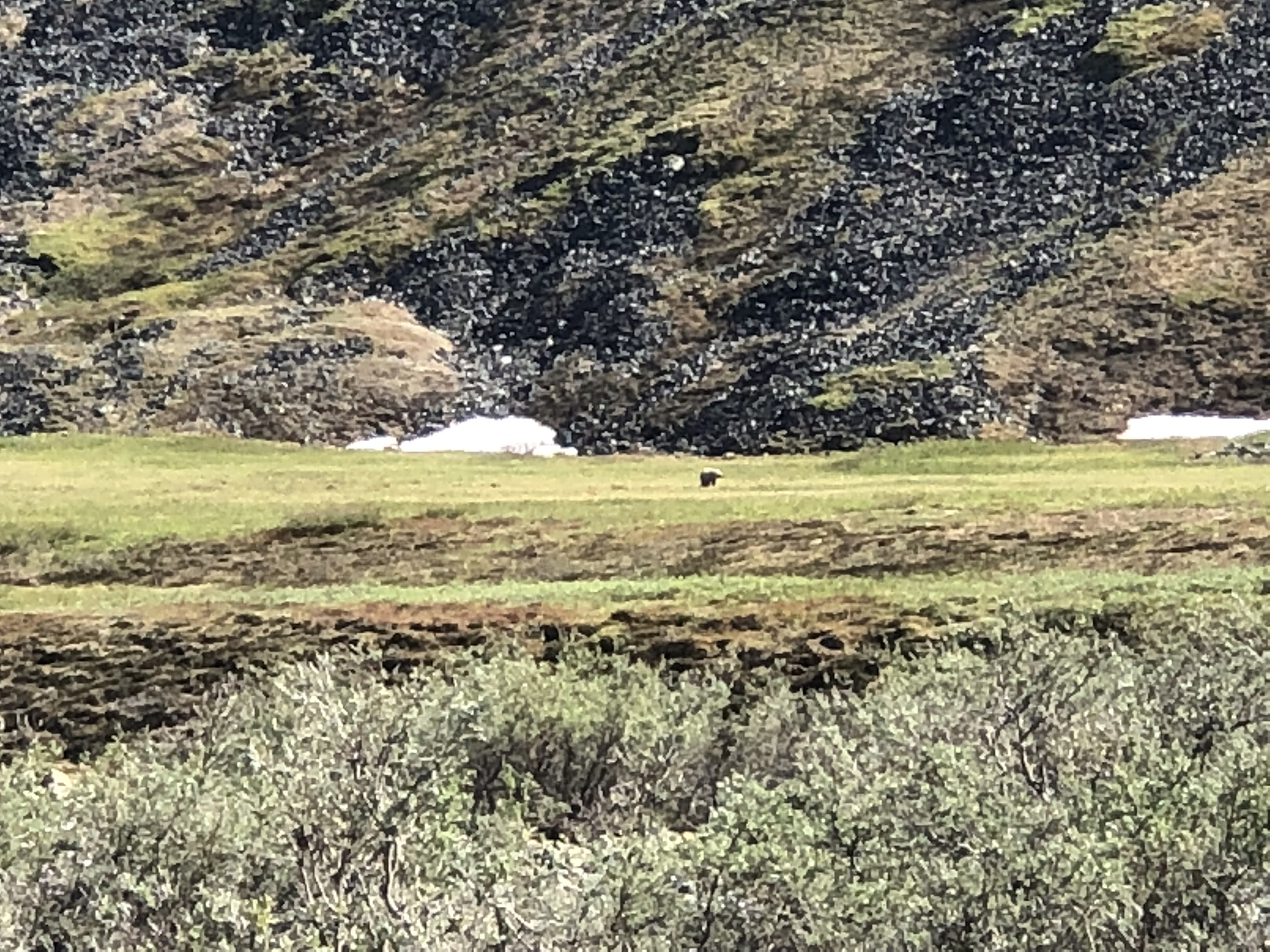
Biologists have never documented polar bears and grizzlies interbreeding in Alaska but, with the Arctic rapidly warming, that might soon change. Kerry Nicholson heads the North Slope Grizzly Project, which focuses on grizzlies living in the oil fields of Alaska’s Arctic. She notes that grizzlies in the Arctic can be exceptionally light colored.
“It’s not that it (hybridization) hasn’t happened in Alaska,” she wrote in an email, “it’s just we haven’t had any confirmed documentation of it, and we don’t have someone specifically looking for it.”
The First Documented Pizzly
Biologists have only documented polar and grizzly bears interbreeding in the wild in Canada’s western Arctic. The resulting viable offspring is most often called a “pizzly” or “grizlar.” The pizzly blew up news headlines in 2006, when Idaho resident Jim Martell shot what he assumed was a polar bear on a guided hunt near Banks Island. When Martell came up to the dead bear, his Inuit guide noted the animal’s long claws, slight hump and patches of brown in its fur and realized it was something unique. An analyzation of the bear’s DNA revealed it was the offspring of a male grizzly and female polar bear.
Martell’s hunt took place 90 miles north of Canada’s mainland. Inuit people living in Sachs Harbor, the one village on the southern tip of the Banks Island, had recently noticed grizzlies on the island. Farther north, on Canada’s Melville Island, a research team sighted grizzlies in 2003 and 2004, even going so far as to photograph one fleeing from a helicopter near ground level.
Grizzlies have been documented showing up in Canada’s western Arctic islands over the past 70 years but there has been an uptick. All have been males, most of which are thought to have traveled from the mainland over the ice to the islands during the spring mating season. Some are likely hibernating on the desolate islands.
Since 2006, there have been eight hybrids verified after being killed or captured. All have been in Canada’s western Arctic islands. A 2017 research paper shows that all eight of these hybrids were descended from one female polar bear mating with two different male grizzly bears. Four hybrids were 50 percent grizzly and 50 percent polar bear. The other four were 75 percent grizzly and 25 percent polar bear, the result of the original two grizzly fathers mating with one of the first generation hybrid offspring. A number of other bears that look like hybrids have been sighted, but without a DNA sample there’s no way to verify for sure.
Béarjà vu
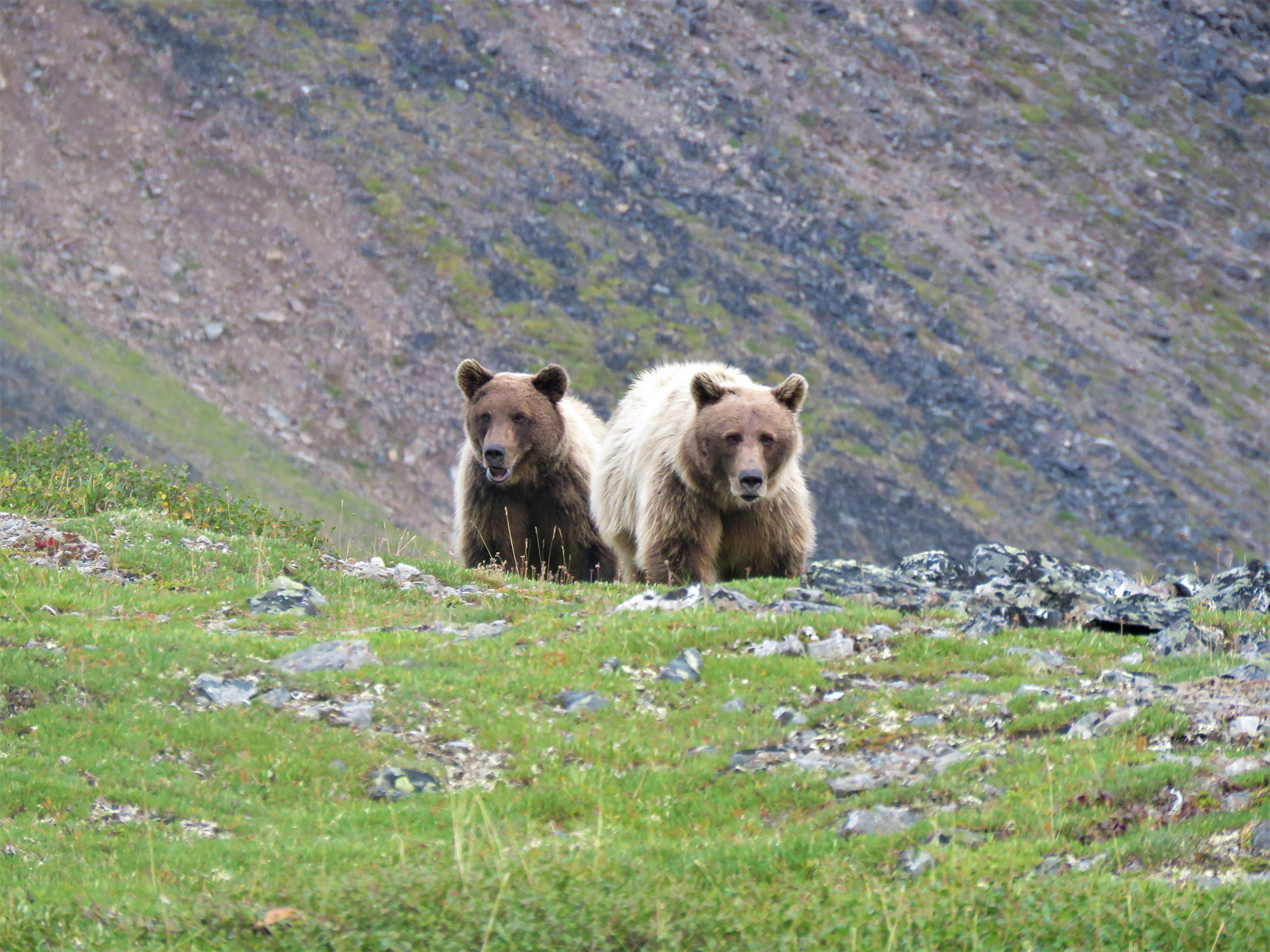
Grizzlies, despite being smaller than polar bears, are more aggressive and dominant. When it comes to mating, male grizzlies have an edge over polar bears. This makes some biologists believe grizzlies could take over populations of polar bears through one-way genetic flow. What occurred around Banks Island could be a teaser of what’s to come. During one of the last rapid climate warming periods, scientists think that’s just what happened in Southeast Alaska.
Southeast’s ABC island archipelago (Admiralty, Baranof and Chichagof) is inhabited by a dense population of genetically unique brown bears. They look and act like brown bears but their mitochondrial DNA is closer to polar bears than other brown bears, even those a few miles away on Southeast Alaska’s mainland. For a while, biologists were confounded by this genetic riddle, even wondering for if ABC Island bears gave rise to polar bears. A team of researchers hypothesized in 2013 that ABC Island bears are the results of male brown bears mating with female polar bears thought to have been marooned on the islands during the end of the Pleistocene as glaciers and sea ice rapidly disappeared from Southeast Alaska. Their theory is that polar bears were inhabiting the ABC islands until around 12,000 years ago, when the climate began rapidly warming. Male brown bears traveled across ice, or even swam, to the islands, then mated with female polar bears and ensuing generations of hybrids until all noticeable traits of polar bears were bred out.
Grizzly and Polar Bears Intermixing in Alaska
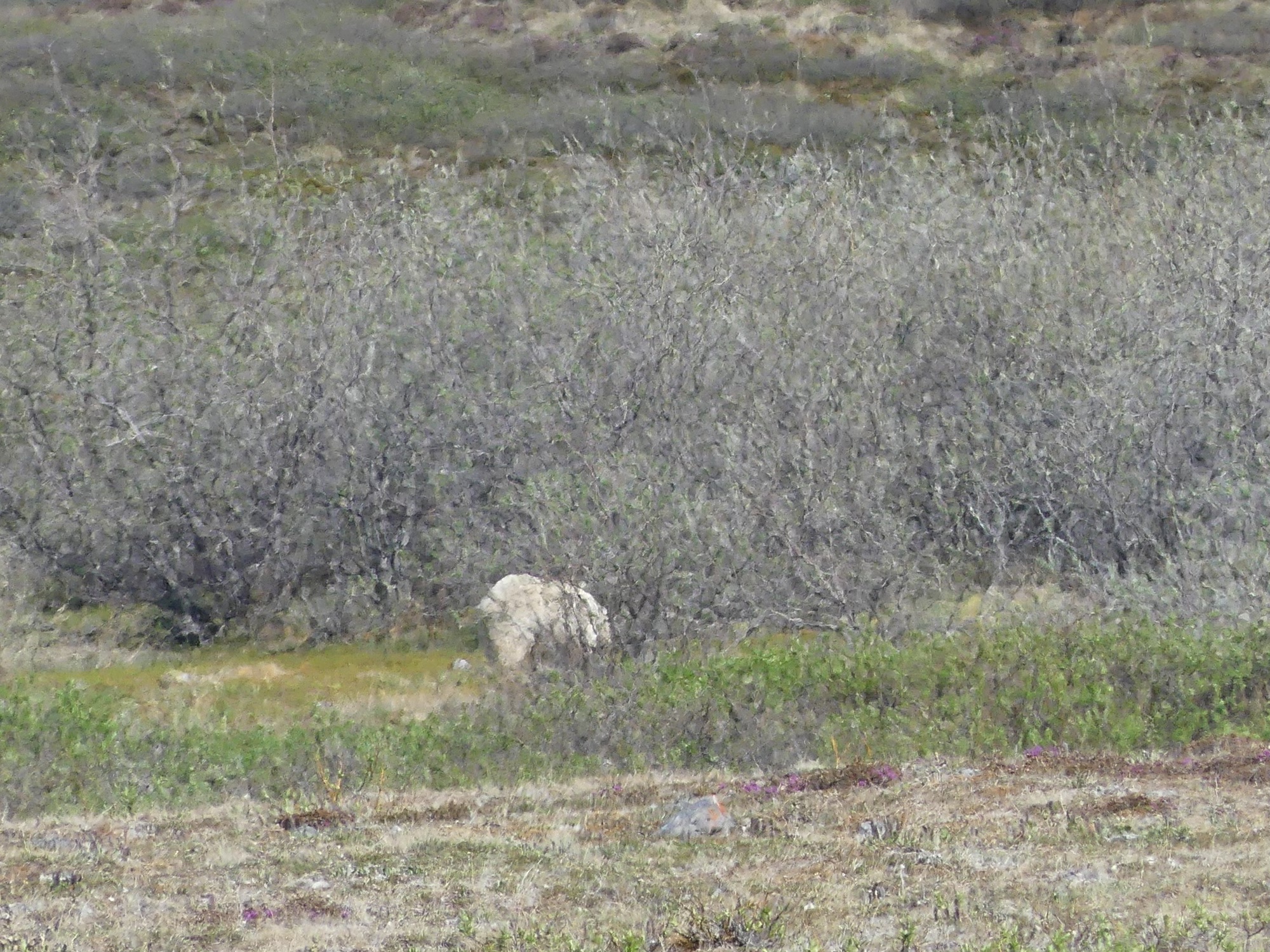
In 2022, my brother Luke and his 18-year-old daughter Kiah were at the beginning of a two-week walk-about in the central Brooks Range when they saw what they thought was a strange, light-colored rock. When it started to move, Kiah pulled out her camera with a super telephoto 600mm zoom and was surprised to see that it was a bear. Luke recalled it having a similar off-white color to that of a mountain goat. They’d been warned by me and folks at the village they’d flown to at the beginning of their trek about how inquisitive and aggressive Arctic grizzlies can be, so they decided to give the bear plenty of space.
“Now, I wish we hadn’t been such chickens and had gotten closer,” Luke says.
Biologist Richard Shideler, who headed Alaska’s North Slope Grizzly Project for three decades until recently, when Kerry Nicholson took over, has seen five or six grizzlies that were as light or even lighter than the bear Luke and Kiah saw. He recalled one biologist who was pretty sure they were seeing a hybrid. They radioed in to have it darted and tested. Results showed it to be 100 percent grizzly. Shideler’s studies revealed that North Slope male grizzlies have a home range, if you could even call it that, of well over 1,000 square miles. Most bear movement was east and west, but one male he collared was followed out onto the sea ice, where it was hunting seals like a polar bear. Shideler also noted cases of polar bears wandering far inland. Some people have thought these outliers were hybrids, when, in reality, they were simply bears exhibiting seemingly strange behavior.
Intermixing of the two species in Alaska during breeding season is very rare. Polar bears, who, except for pregnant females, don’t hibernate, are known to breed out on the sea ice in March and April. Male grizzlies begin emerging from their dens in April, but it would be unlikely for one to contact a female polar bear in estrus unless one ventured far out on the sea ice. Unlike western Canada, there are no large offshore islands in Alaska. Numerous pregnant polar bears do hibernate on the North Slope, so there is a small possibility of another adult bear killing a polar bear’s cubs and bringing her into estrus. The odds are exceptionally low, however, considering the female polar bear would attempt to head out onto sea ice to hunt seals as soon as she could.
Polar bears spend time ashore on Alaska’s mainland at Kaktovik, the one village in Alaska’s Arctic National Wildlife Refuge, roughly 40 miles from where Peter had his sighting of the strange bear in 2019. They also spend time ashore at Cross Island, a dozen miles north of Prudhoe Bay. Bears also come to feast on the remains of bowhead whales taken by Inupiaq hunters. Most often, polar bears show up in August and remain through October, when the sea ice forms and gives them a platform to hunt seals. Grizzlies periodically utilize both locations. Observational data does not show the two species intermixing, other than grizzlies running the much larger polar bears off. Todd Atwood, a biologist for the U.S. Geological Survey who studies these bears, points out that Alaska has “a genetic database of over 2000 individuals that have been sampled over the decades and we’ve never found a hybrid.”
Wapusk Park in Canada’s southern Hudson Bay is another place of interest for potential hybridization. In 2018, Doug Clark of the University of Saskatchewan, was part of a research team that documented with trail cameras all three species of North American bears using the same area. One camera trap showed a polar bear and black bear pass by within three hours of each other. Grizzlies, lured by rapidly advancing vegetation to forage, are only recently arriving.
The End is Near… Or is it the Beginning?
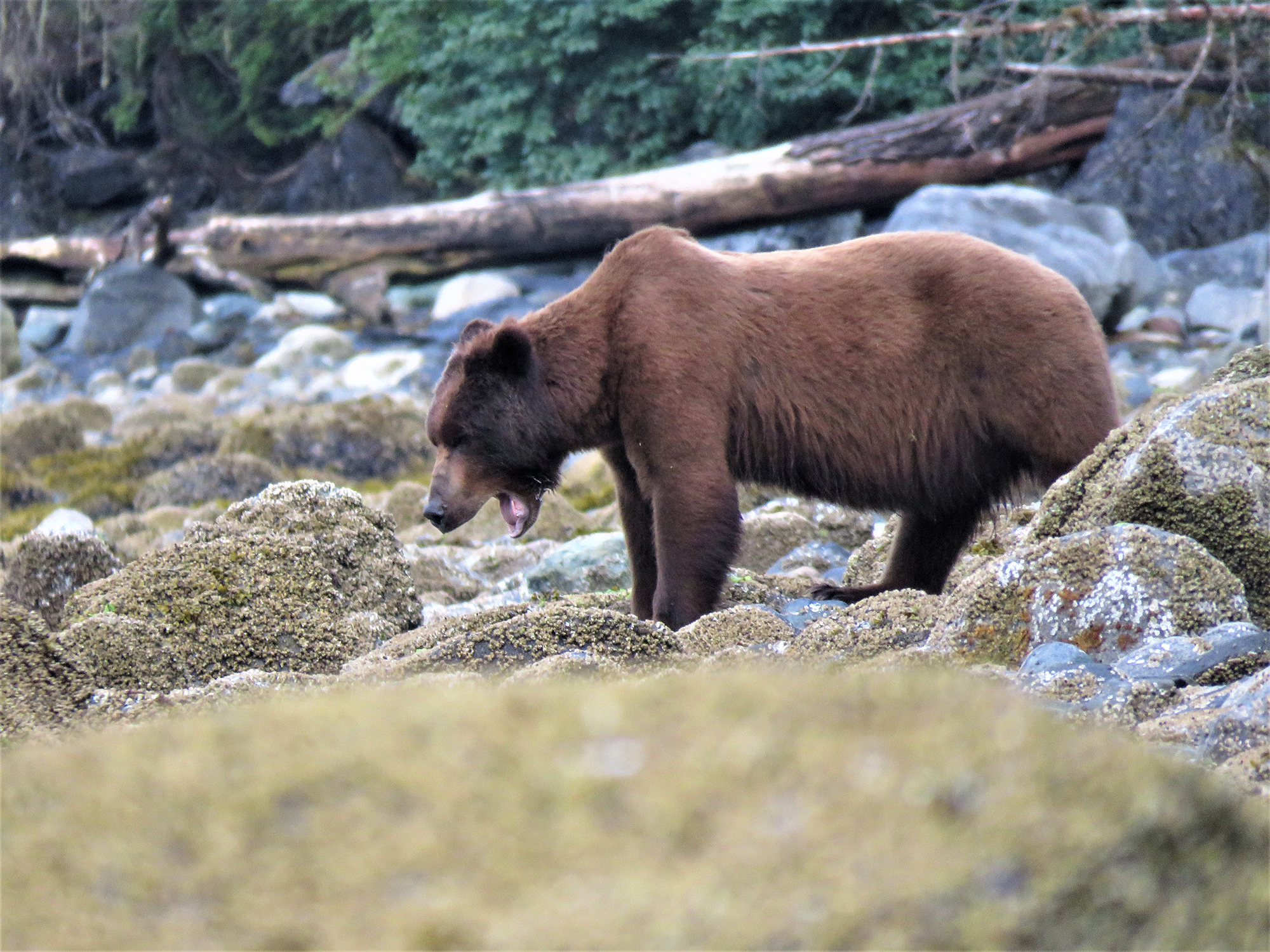
I shared the pictures of the bears Luke and Kiah, and Peter, encountered with a handful of biologists. There’s no way of telling for sure, but they didn’t entirely rule out either bear being a hybrid. It’s hard to say anything certain, with how rapidly the Arctic ecosystem is transforming and with diminishing sea ice.
“I’m not going to say never. Things are changing so fast,” Shideler says.
A recent study shows the Arctic is warming four times faster than the global average. This is leading to a variety of consequences and changes. Some are “bad,” like winter rain on snow events that are terrible for ungulates like caribou and Dall sheep. Some are “good,” like salmon runs colonizing rivers and streams flowing off the North Slope into the Arctic Ocean. What all this means for the potential hybridization of polar bears and grizzlies remains to be seen.
Todd Atwood summed it up well: “We know hybridization can and has occurred, albeit infrequently to date. Will it increase in frequency as polar bears spend more time on land? Perhaps. Time will tell.”
